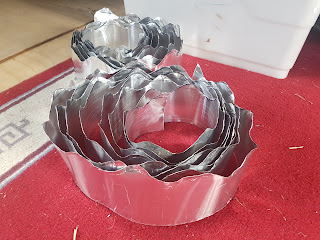2022 May
Winter was approaching and I was a little worried about the new water pipes under the house freezing and bursting. We bought special insulation tubes that are specially designed for this. It was a simple job but involved a lot of awkward angles crawling around under the house.
The insulation tubes were easy to use, they could be cut with scissors, applied at angles and around corners, and I soon worked out some way to get them to stay up on their own.
I was listening to podcasts as I crawled around under there to keep me entertained, constantly losing my scissors cos they were behind me. At some points it was a bit confusing because the copper pipes were a mixture of cold water, hot water, and gas. They were coming off and going to the hot water system, then coming back in, then one was going to the gas stove with gas, and then the water ones were going off to the shower, the basin, the laundry and the sink. The ones with green plastic around them are the hot water so at least that's easy to keep track of. The silver tape around the black insulation is special insulation tape which is extra sticky, so perfect for this situation.
The hot water system has water in, gas in, and water out. I thought the gas pipe probly didn't need to be insulated. I used some zip ties to hold these tubes on.
Josh climbed up on the roof, unscrewed the ridge cap a little and slid our custom made gap filler underneath and re-attached the ridge cap. We were worried that the shiny aluminium would be unsightly on the roof compared to the grey, so bought the Colorbond matching grey paint and painted it after application. You can't even see it anymore.









No comments:
Post a Comment